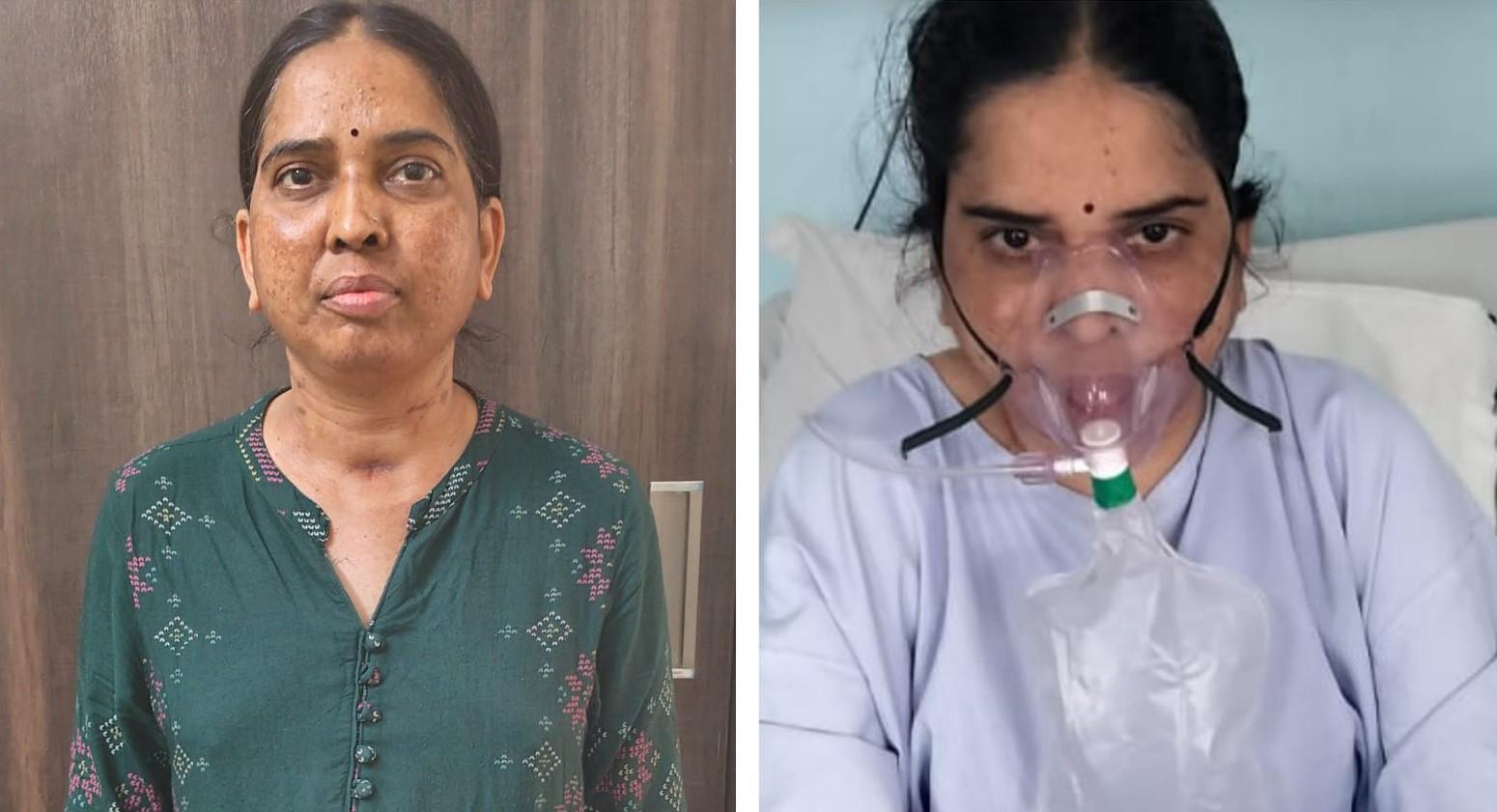Symptoms:
Spinal cord injuries can manifest with a range of symptoms, reflecting the complexity of the central nervous system. Common indicators include:
- Loss of Motor Function: Paralysis or weakness in various parts of the body.
- Sensory Changes: Altered sensations, numbness, or tingling in affected areas.
- Difficulty Breathing: Impaired respiratory function, particularly if the injury is high on the spinal cord.
- Pain: Persistent or intermittent pain along the spinal cord, varying from localized discomfort to intense agony.
- Bladder and Bowel Dysfunction: Challenges in controlling urinary and bowel functions.
- Spasms: Involuntary muscle contractions, often spasmodic in nature.
Causes:
Spinal cord injuries result from diverse causes, including:
- Trauma: Falls, accidents, sports injuries, or violence causing damage to the spinal cord.
- Diseases: Conditions like tumors, infections, or degenerative disorders affecting the spinal cord.
- Genetic Factors: Inherited conditions that predispose individuals to spinal cord issues.
Treatment:
Addressing spinal cord injuries requires a comprehensive approach involving:
- Emergency Medical Care: Immediate attention to minimize further damage.
- Stabilization: Immobilization of the spine to prevent additional injury during transportation.
- Surgery: Surgical interventions to repair or stabilize the spinal cord.
- Rehabilitation: Physical therapy, occupational therapy, and other rehabilitation measures to enhance functionality and adapt to life with the injury.
- Medications: Pharmacological interventions to manage pain, inflammation, and associated complications.
- Assistive Devices: Wheelchairs, braces, and other devices to support mobility and daily activities.
- Psychological Support: Counseling and mental health support to cope with the emotional impact of the injury.
Understanding the symptoms, causes, and treatment options for spinal cord injuries is crucial for effective management and improving the quality of life for individuals affected by this challenging condition.
A spinal cord injury (SCI) is a life-altering medical condition resulting from damage to the spinal cord, a vital component of the central nervous system. Typically caused by traumatic events such as accidents or falls, SCIs can have profound consequences on a person's mobility, sensory perception, and overall quality of life. The severity of the injury often determines the extent of functional impairment, ranging from temporary limitations to permanent paralysis.
Symptoms:
Neck pain manifests through a spectrum of symptoms, each influencing daily comfort and functionality. Common indicators include:
- Stiffness: A sensation of tightness or reduced flexibility in the neck.
- Localized Discomfort: Dull or sharp pain focused on the neck muscles or cervical spine.
- Radiating Pain: Discomfort extending into the shoulders, arms, or upper back.
- Headaches: Tension-type headaches often accompanied by neck stiffness.
- Muscle Spasms: Involuntary contractions causing additional pain and restricted movement.
- Numbness or Tingling: Sensations of pins and needles in the neck or extending to the arms.
Causes:
Neck pain can arise from a variety of factors, including:
- Muscle Strain: Overuse, poor posture, or sudden movements leading to muscle tension.
- Joint Issues: Degeneration or inflammation of cervical joints.
- Injuries: Accidents, whiplash, or trauma causing damage to the neck structures.
- Herniated Discs: Discs in the spine pressing on nerves due to wear and tear.
- Nerve Compression: Pinched nerves from conditions like cervical radiculopathy.
- Underlying Conditions: Conditions like arthritis, meningitis, or tumors affecting the neck.
Treatment:
Effectively addressing neck pain involves a multifaceted approach, incorporating:
- Rest and Activity Modification: Balancing rest with gentle movements to avoid stiffness.
- Heat or Cold Therapy: Applying heat or cold packs to alleviate pain and reduce inflammation.
- Physical Therapy: Targeted exercises to improve strength, flexibility, and posture.
- Medications: Pain relievers, muscle relaxants, or anti-inflammatory drugs as prescribed.
- Posture Improvement: Ergonomic adjustments to prevent strain during daily activities.
- Injections: Corticosteroid injections for localized pain relief.
- Surgery: In cases of severe injury or persistent issues, surgical interventions may be considered.
Understanding the symptoms, causes, and available treatments for neck pain is pivotal in tailoring effective management strategies and facilitating a return to optimal neck function. Individuals experiencing persistent or worsening neck pain should seek professional medical evaluation for a personalized treatment plan.
Neck pain is a prevalent and often discomforting condition that can affect individuals of all ages and backgrounds. Located at the top of the spine, the neck plays a crucial role in supporting the head's weight and facilitating a wide range of movements. Neck pain can arise from various sources, including muscle strain, poor posture, injury, or underlying medical conditions.
Symptoms:
Knee pain presents a range of symptoms that can significantly impact daily life, including:
- Pain: Persistent or intermittent discomfort, varying from mild to severe.
- Swelling: Inflammation around the knee joint, often accompanied by warmth.
- Stiffness: Difficulty bending or straightening the knee, accompanied by a feeling of tightness.
- Instability: Sensation of the knee giving way or feeling unsteady during movement.
- Crunching or Popping Sounds: Audible noises during joint movement, indicative of potential issues.
Causes:
Knee pain can arise from diverse factors, such as:
- Injuries: Ligament tears (ACL, MCL), meniscus tears, fractures, and dislocations.
- Joint Overuse: Repetitive strain or overuse, prevalent in athletes or physically demanding occupations.
- Medical Conditions: Arthritis (osteoarthritis, rheumatoid arthritis), gout, and infections affecting the knee joint.
- Mechanical Issues: Malalignment of the kneecap (patellar tracking disorder) or abnormal joint structure.
- Age-Related Wear and Tear: Degeneration of cartilage and joint tissues over time.
Treatment:
Managing knee pain involves a combination of targeted approaches tailored to the underlying cause and severity:
- Rest and Ice: Adequate rest and application of ice packs to reduce inflammation.
- Pain Medications: Over-the-counter or prescribed pain relievers.
- Physical Therapy: Targeted exercises to strengthen muscles and improve joint flexibility.
- Supportive Devices: Knee braces or splints for added stability.
- Injections: Corticosteroid injections to alleviate inflammation and pain.
- Surgical Intervention: For severe cases, procedures such as arthroscopy, ligament reconstruction, or joint replacement may be recommended.
Effective treatment often entails a personalized approach, considering the specific cause of knee pain and tailoring interventions to alleviate discomfort and restore optimal function. Individuals experiencing persistent or worsening knee pain should seek medical evaluation for a comprehensive diagnosis and a suitable treatment plan.
Knee pain is a common and often disruptive condition affecting people across various age groups and lifestyles. Situated at the intersection of bones, ligaments, and tendons, the knee plays a crucial role in supporting body weight and facilitating mobility. Knee pain can stem from a multitude of causes, including injuries, overuse, arthritis, or mechanical issues, leading to a spectrum of discomfort ranging from mild to severe.





























